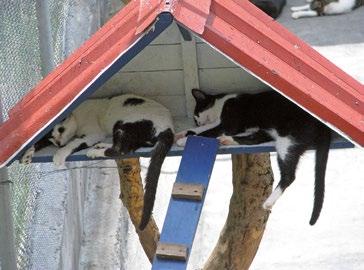
1 minute read
Disorders associated with elimination behaviour
SERVET CLINICAL GUIDES AETIOLOGY
In addition to these clinical signs, any other signs noted during anamnesis that are of a repetitive nature, harmful to the animal, or which the patient cannot control in terms of when they start and end should also be recorded.
Most common feline stereotypies
The diseases most frequently encountered in the context of compulsive syndrome or stereotyped behaviour in cats are: ➤ Compulsive licking: feline psychogenic alopecia. ➤ Feline hyperaesthesia. ➤ Wool sucking. ➤ Tail chasing, with or without self-mutilation.
BEHAVIOURAL DISORDERS
16
DIAGNOSIS
The diagnosis revolves around the following points: ➤ Data gathered during the anamnesis in an attempt to identify the cause: onset of the condition, context in which the animal exhibits the behaviour, etc. ➤ Identification of the origin: primarily genetic or environmental. ➤ Direct observation of the patient’s behaviour, the owner–patient relationship, and their living environment, as well as an understanding of any frustration-inducing factors. Additionally, the veterinarian should observe if the animal displays other, nonstereotyped behavioural alterations.
Organic causes must be ruled out through complementary methods (analysis of hormone levels, an electroencephalogram, allergy testing, X-rays, etc.) and a probable environmental cause should be established.
In the case of stereotypies with associated dermatological diseases of uncertain origin, corticosteroids can be used as a means of diagnosis.
It would be entirely incorrect to diagnose “boredom” as the cause of the problem, although it may form part of the cause.
Stereotyped behaviours are abnormal expressions of normal behaviours typically observed in the species, for example, grooming, vocalisation, locomotion, etc.
Diagnosis is based on the clinical signs and information collected during the anamnesis, always provided that any clinical conditions are ruled out.



